The document discusses insertion sort, describing it as the simplest sorting technique. It has a linear time complexity of O(n) for nearly sorted or small data sets, but a quadratic time complexity of O(n^2) for large or reverse sorted data. Insertion sort is an in-place, stable sorting algorithm that requires only constant O(1) auxiliary space. While having a higher time complexity than other sorts for large data sets, insertion sort remains useful for sorting small data sets or as the base case in more complex sorting algorithms due to its simplicity and in-place implementation.
![What do sorts do?
● Take this: [6, 24, 10, 76, 35, 0, 37]
– Make it into this: [0, 6, 10, 24, 35, 37, 76]
● Or this: [“dolphin”, “yak”, “caribou”]
– Into: [“caribou”, “dolphin”, “yak”]
● How do you sort?](https://image.slidesharecdn.com/insertionsort-140609122439-phpapp01/75/Intro-to-Sorting-Insertion-Sort-1-2048.jpg)

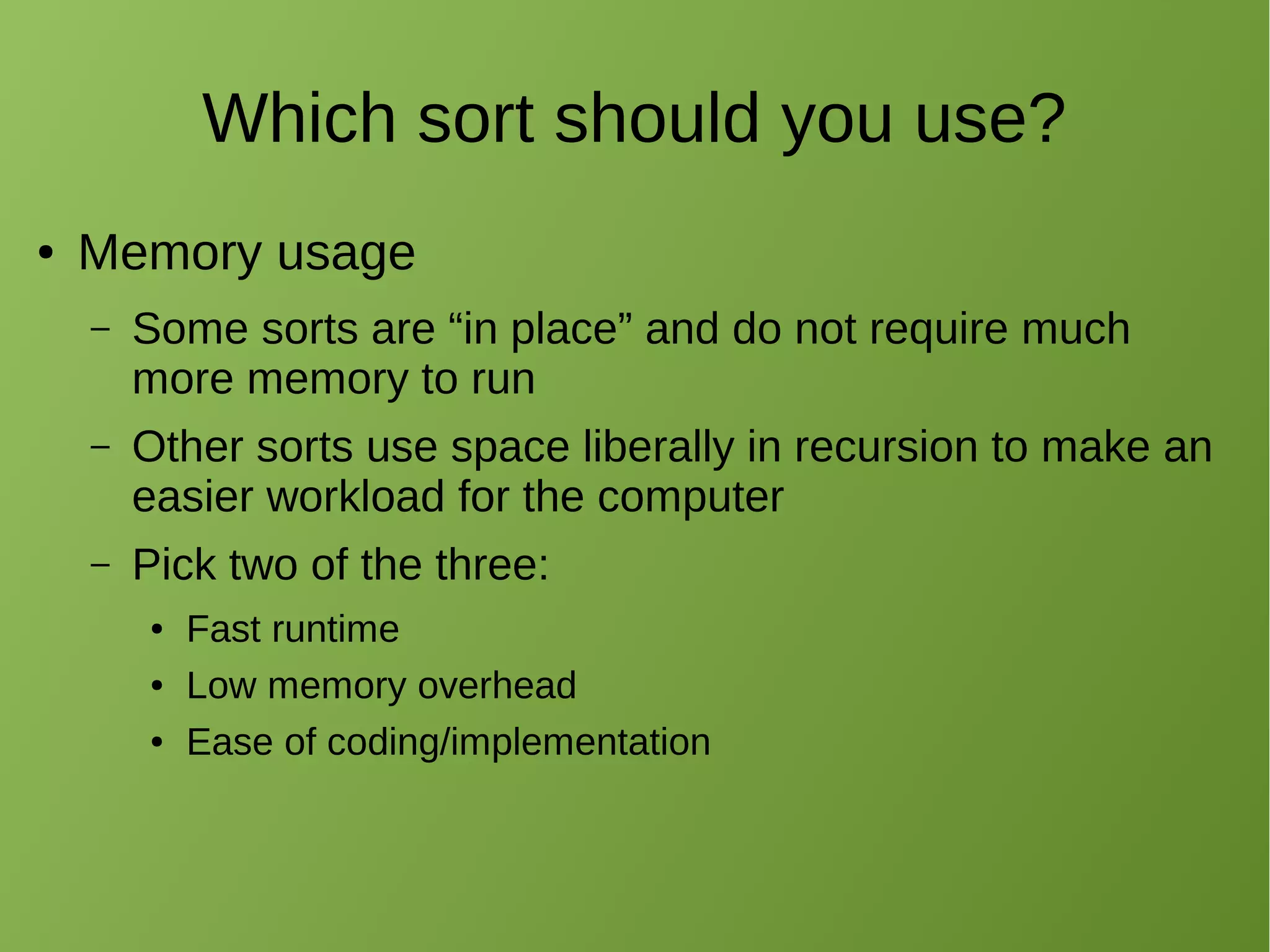
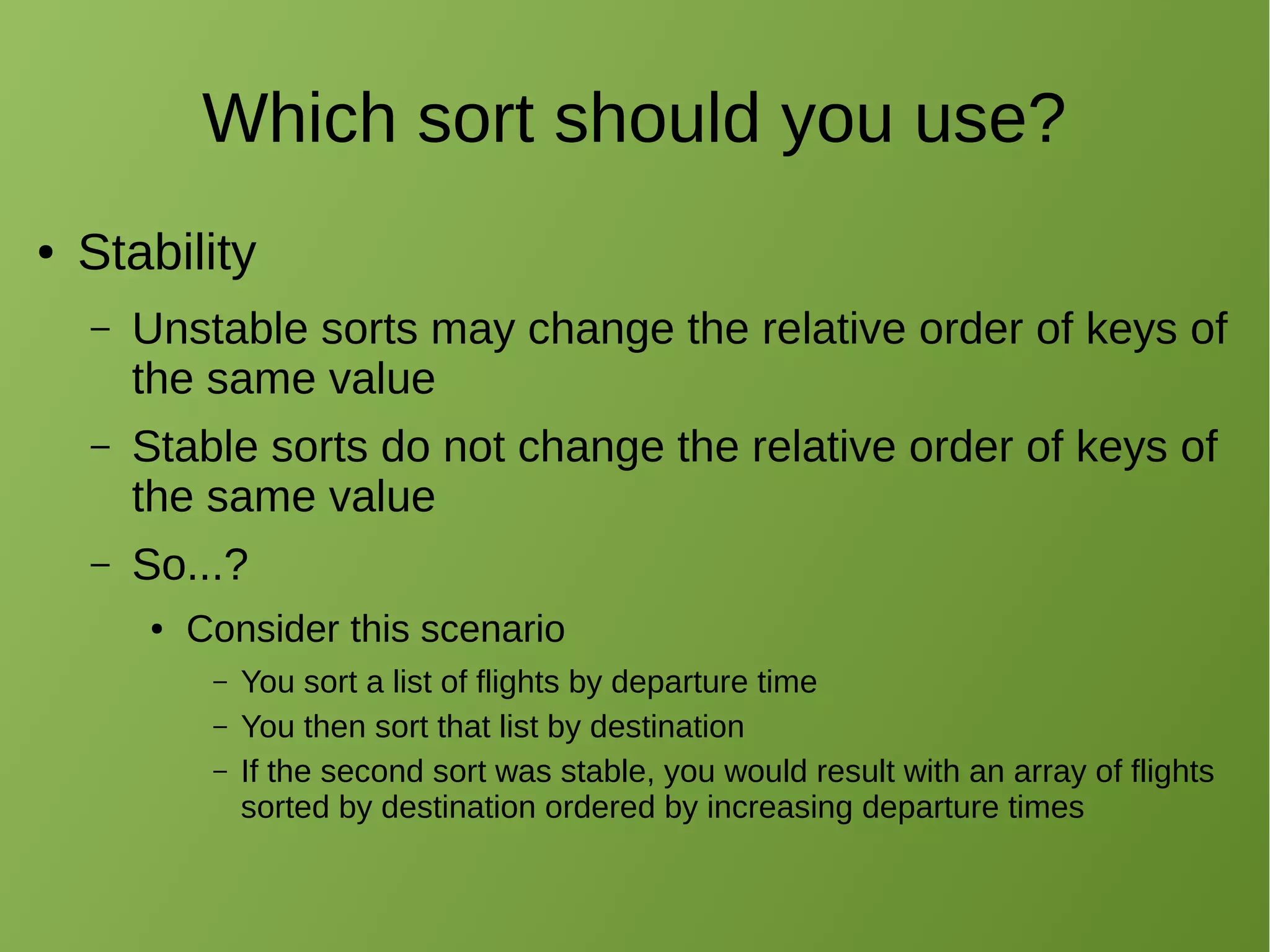
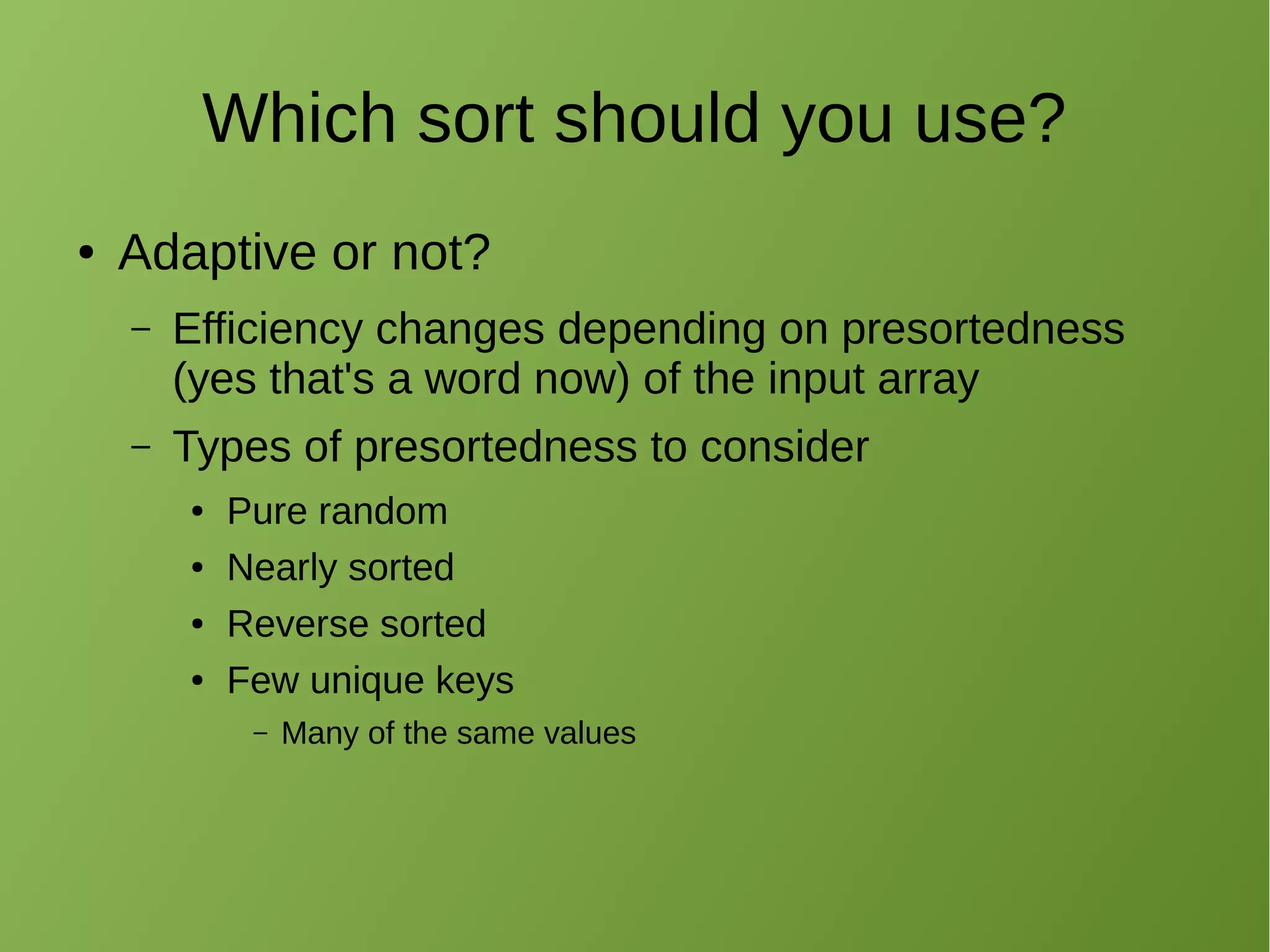

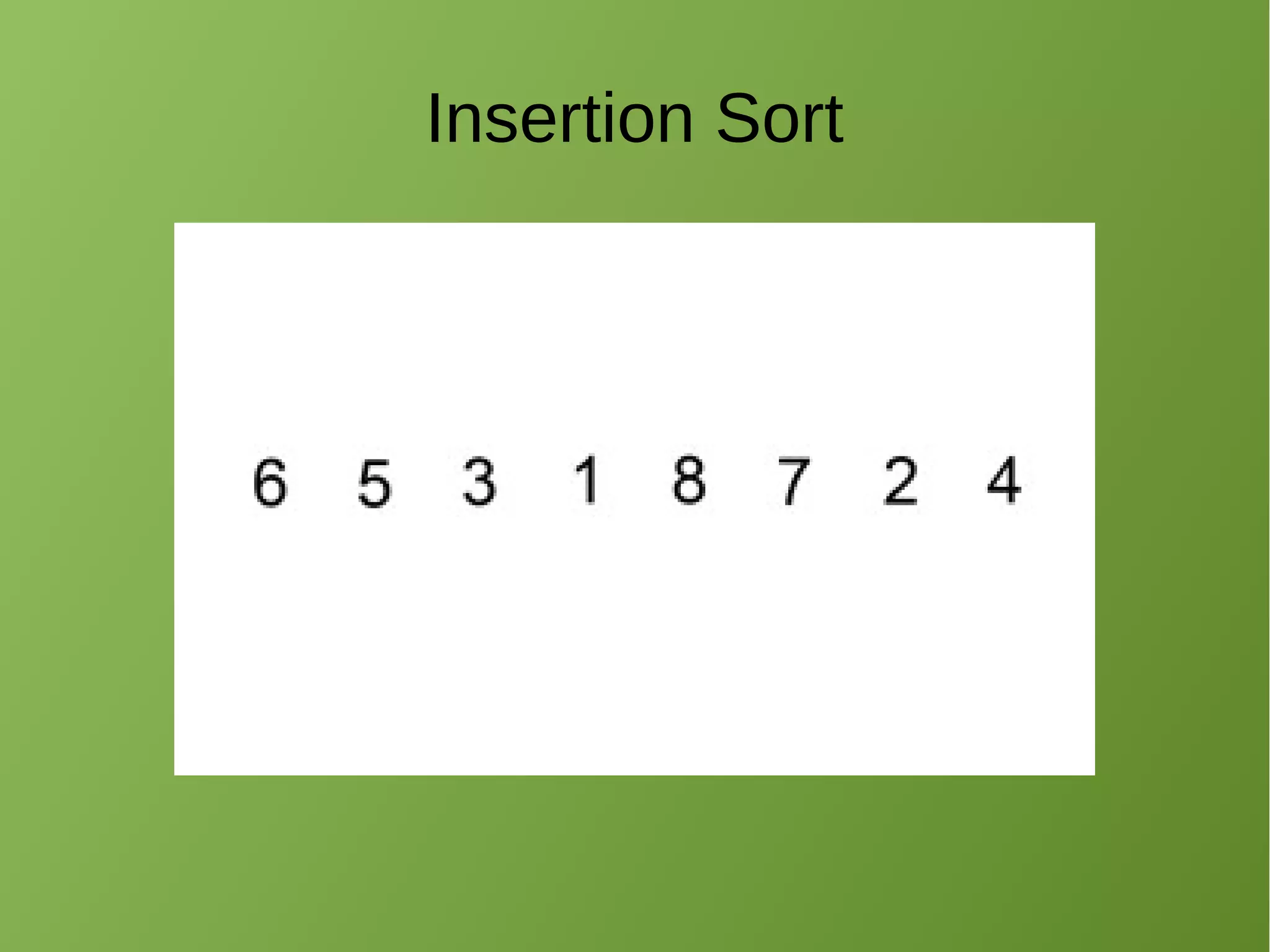
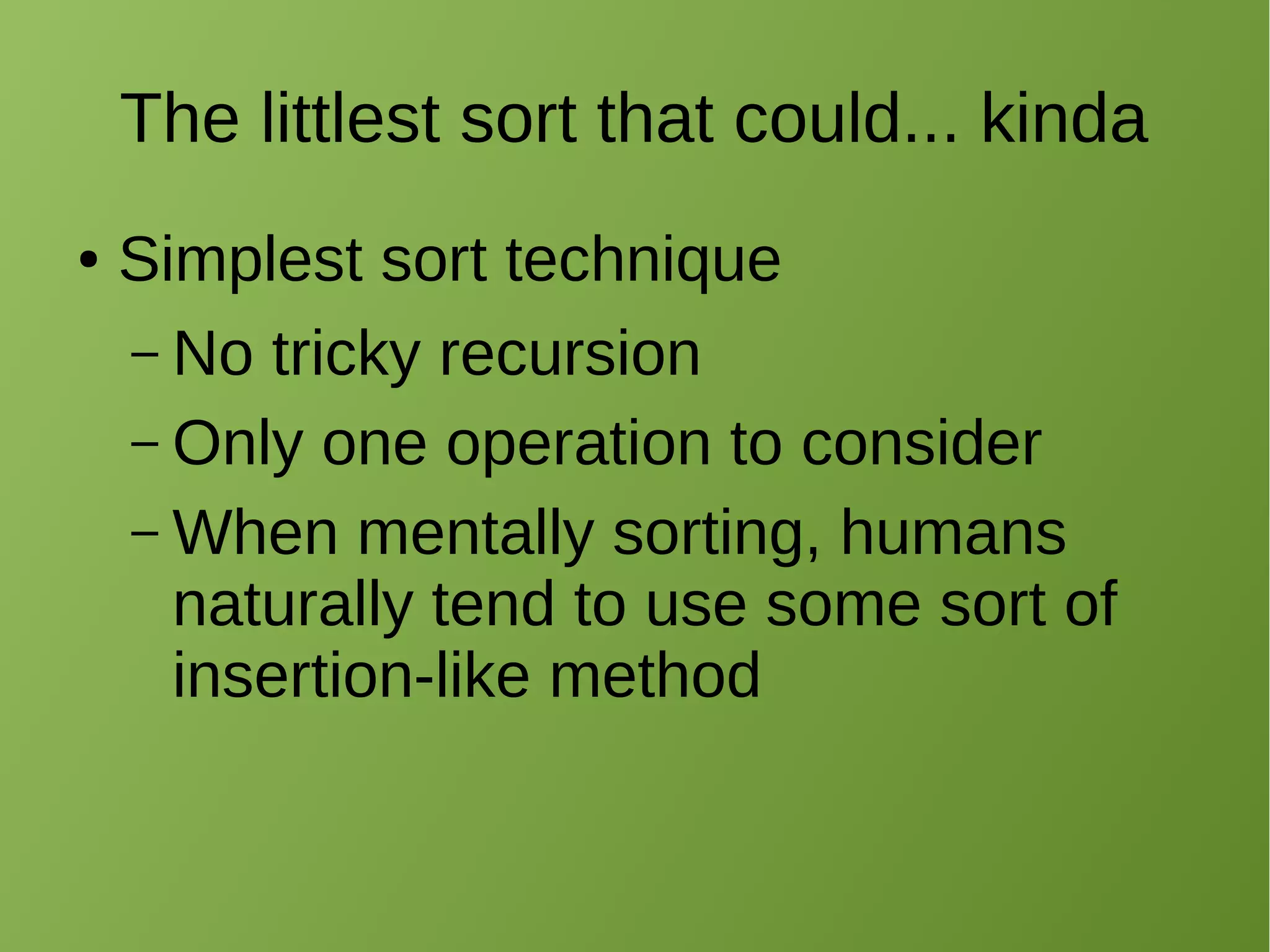

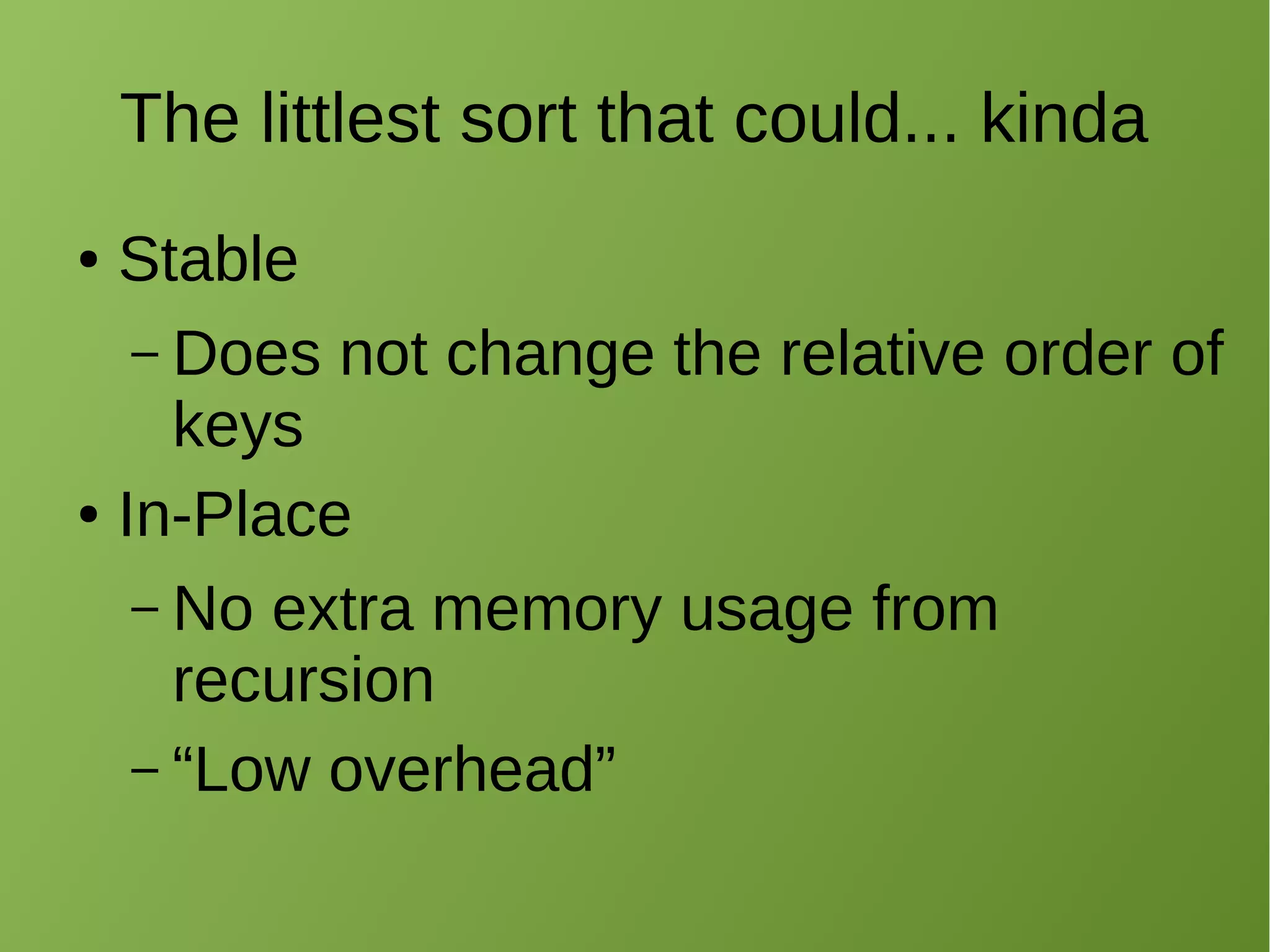
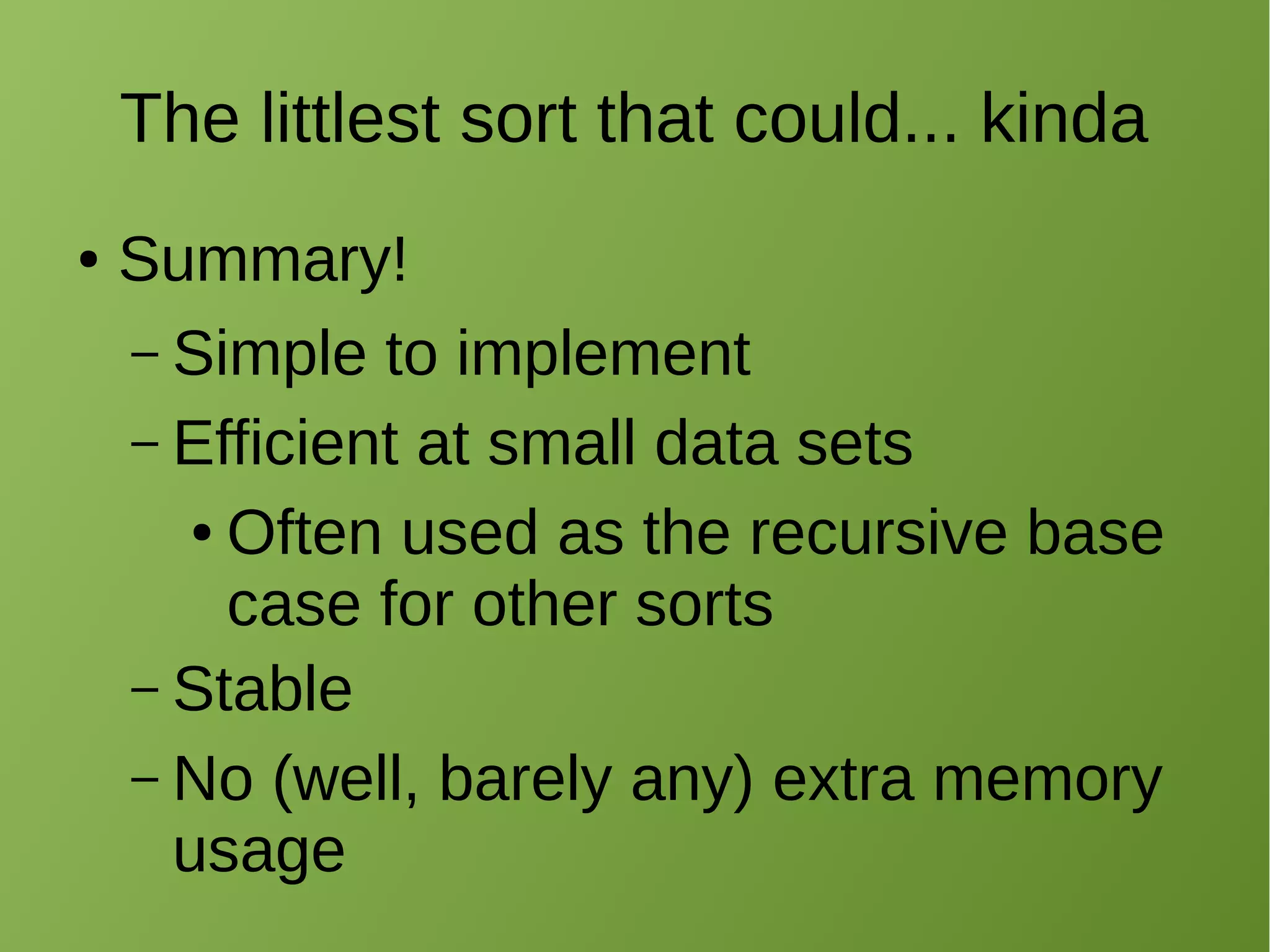
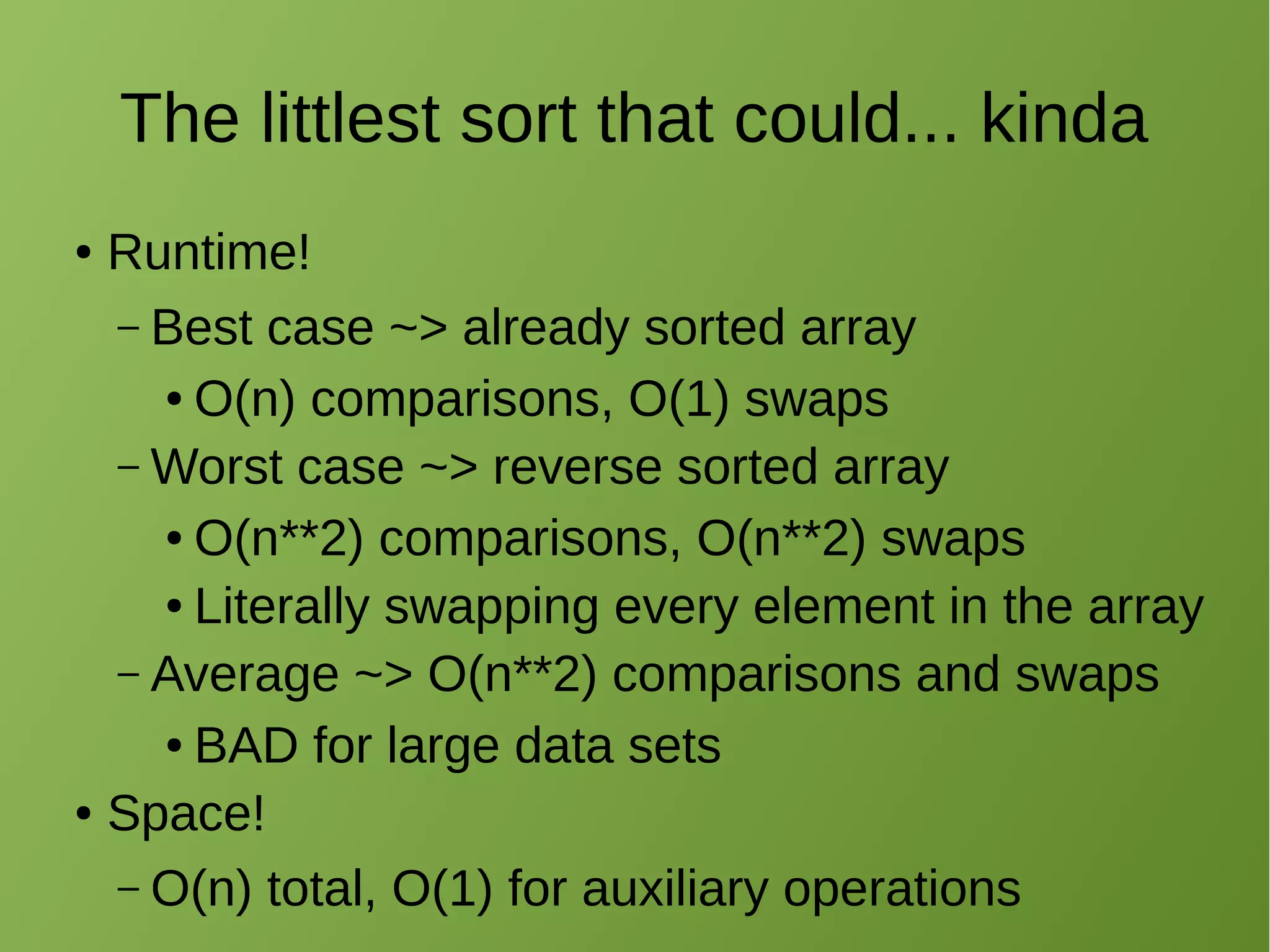
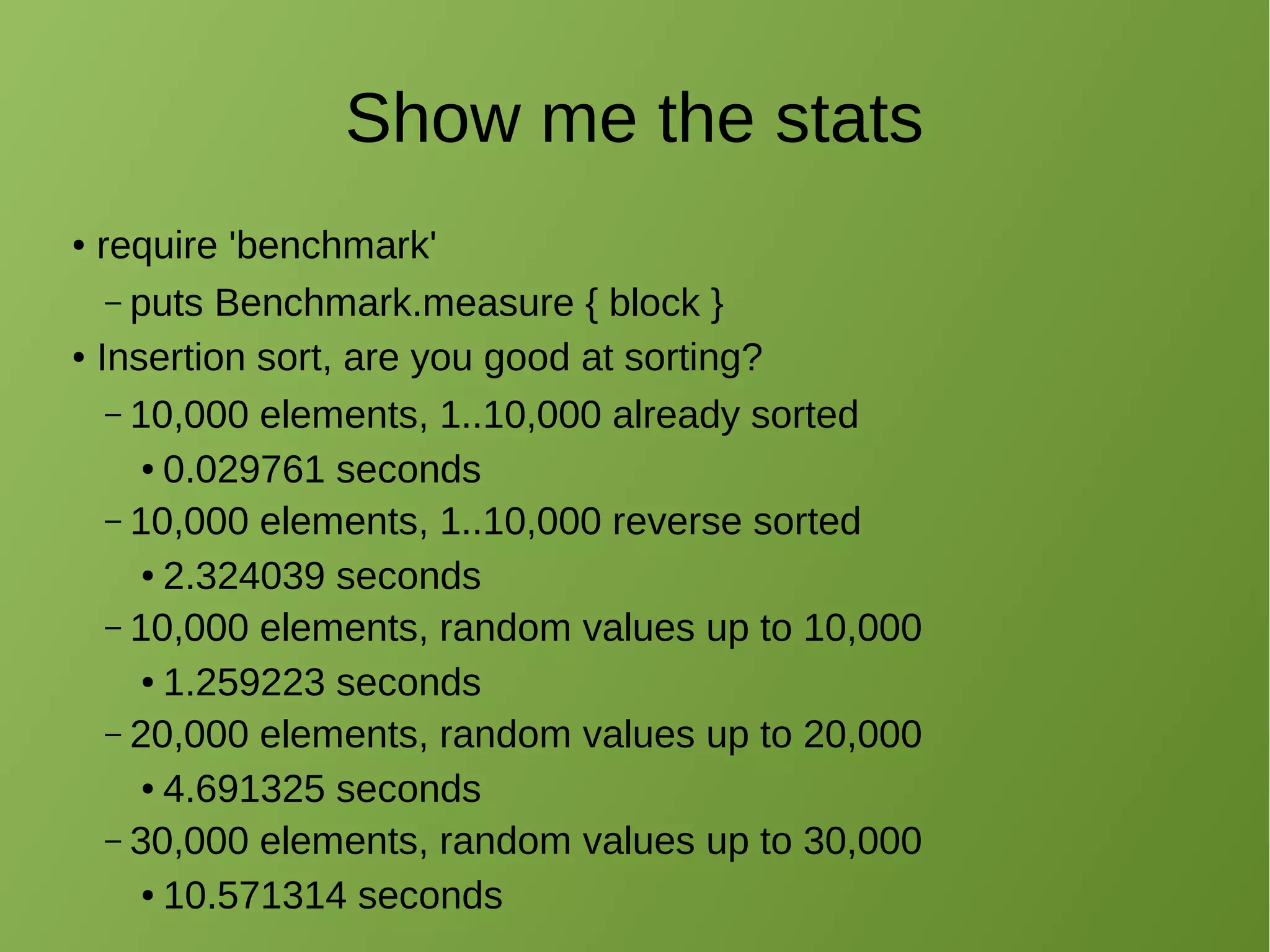

![Bro, do you even logic?
● For each n in a range of the numbers 1..(array.size-1)
– Pull position n out of the array destructively
● Create value_to_insert variable ~> (array[n])
● Create insertion_index variable ~> (n)
– While the value of n > 0 and the value_to_insert is smaller than
the value at the position before insertion_index in the array
● Looking at the value before array[n]...
– Is it bigger than array[n]?
● insertion_index should be decremented
● “while” code runs again
– Is it smaller than array[n]?
● The “while” loop is broken
– value_to_insert should be inserted at insertion_index
● Each loop finished; return the array](https://image.slidesharecdn.com/insertionsort-140609122439-phpapp01/75/Intro-to-Sorting-Insertion-Sort-15-2048.jpg)
